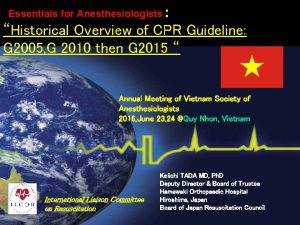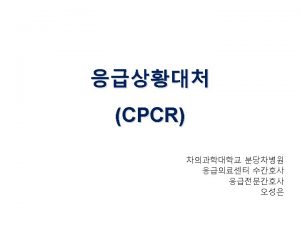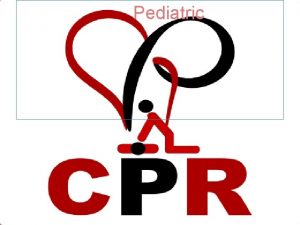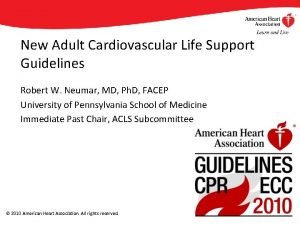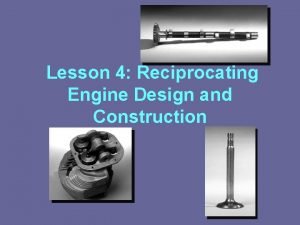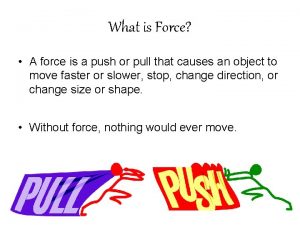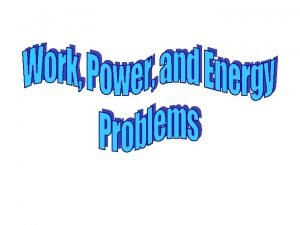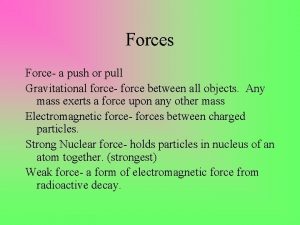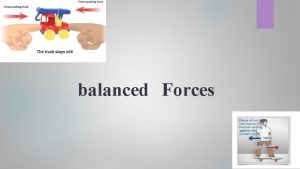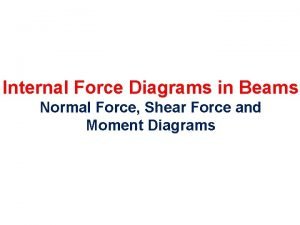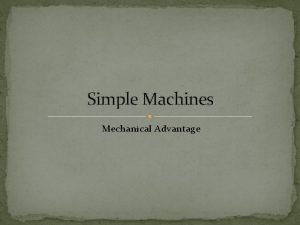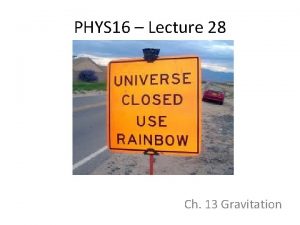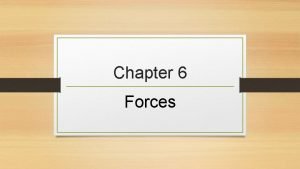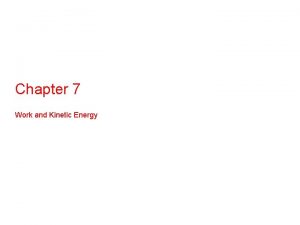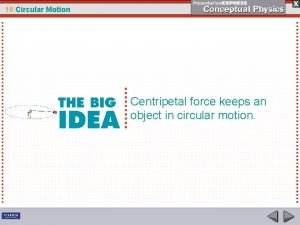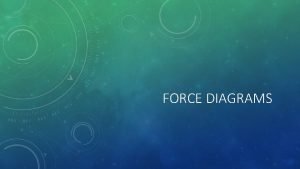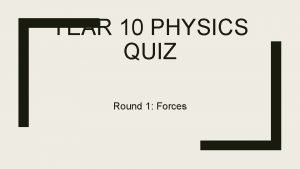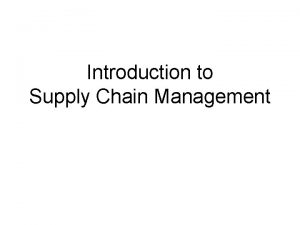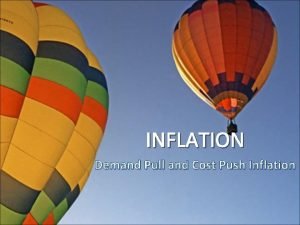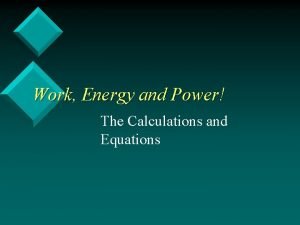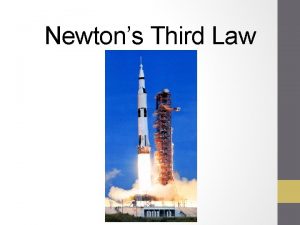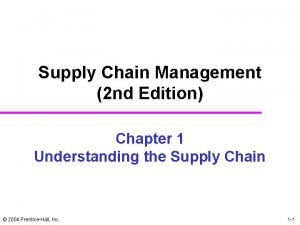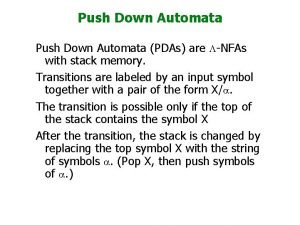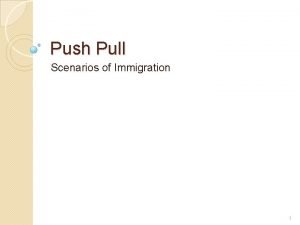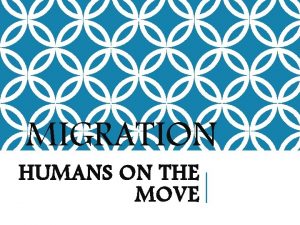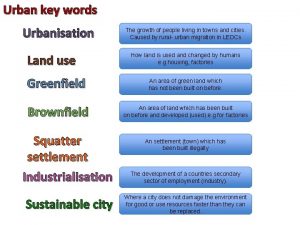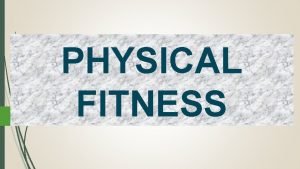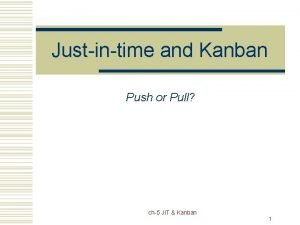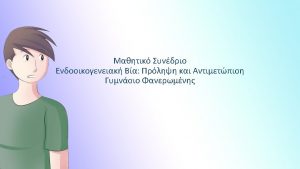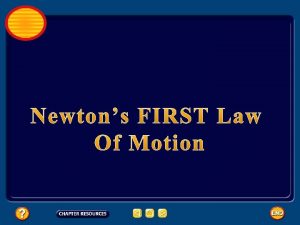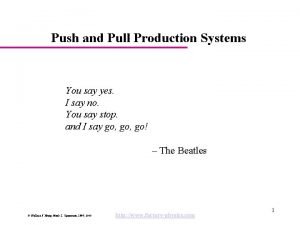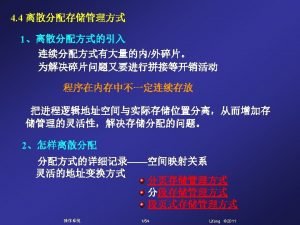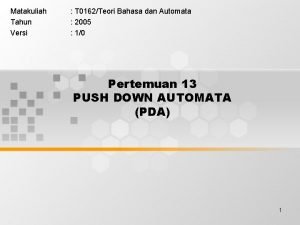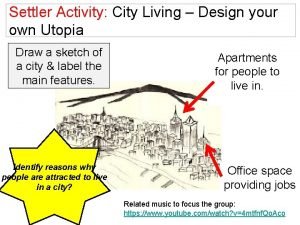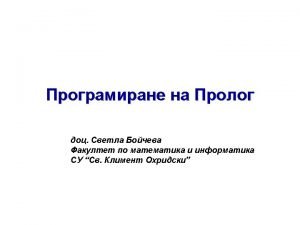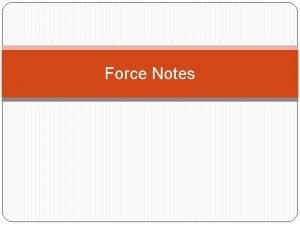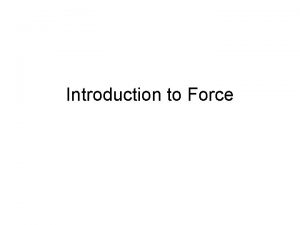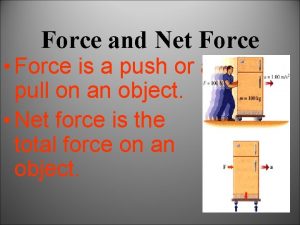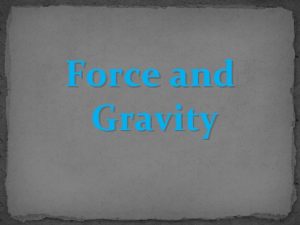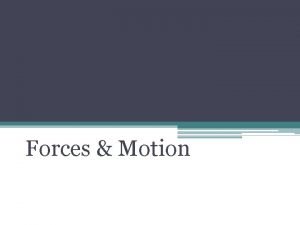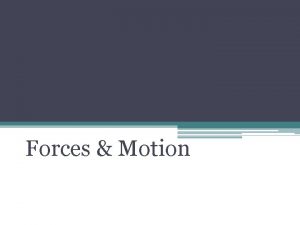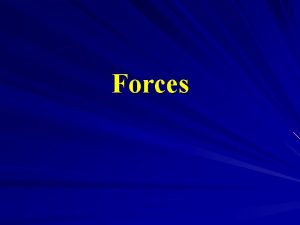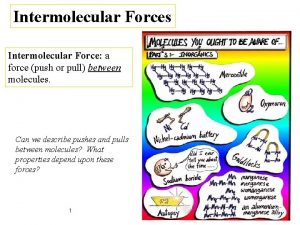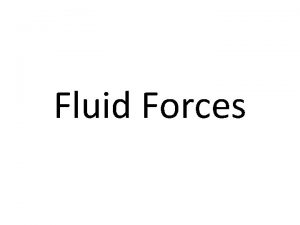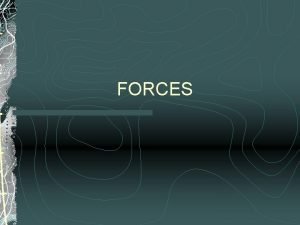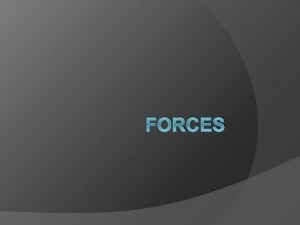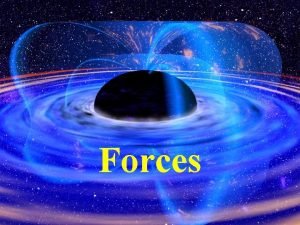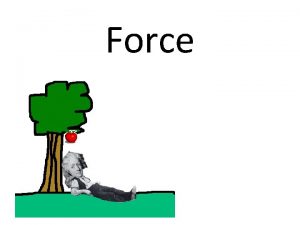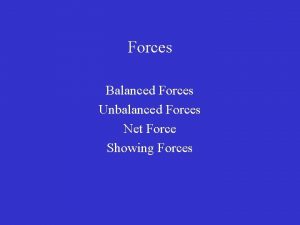Forces Forces A FORCE is a push or





































































- Slides: 69

Forces

Forces A FORCE is a push or a pull exerted on an object n Forces can cause objects to speed up, slow down, or change direction. n Force is measured in Newtons n

Force n n n Forces come in pairs A force is a vector Forces have a magnitude and a direction 5 N, north (up) Magnitude: 5 N Direction: north (up)

Types of Forces n There are two types of forces n Contact forces n Forces at a distance

Contact Forces n n Contact forces- types of forces that result when the two interacting objects are perceived to be physically contacting each other Examples of contact forces: 1. 2. 3. Applied force Friction force Tension force 4. Normal force 5. Air resistance

Applied Force n n n Identified as Fa Applied to an object by a person or another object Acts in the horizontal direction, parallel to the surface

Friction Force n n n Identified as Ff Acts opposite sliding motion between surfaces Acts in the horizontal direction, parallel to the surface and opposite the direction of sliding

Tension Force n n n Identified as FT Pull exerted by a rope, string, or cable attached to a body and pulled tight Acts away from the object and parallel to the string, rope or cable

Normal Force n n Identified as FN Exerted by a surface on an object (presses two surfaces together) Acts in an upward, vertical direction, perpendicular to the surface Sometimes referred to as the support force

Air Resistance Force n n n Identified as Fair Type of frictional force that acts upon objects as they travel through the air Acts opposite motion

Long Range Forces n Long Range Forces- forces that occur between objects that are not touching. Examples of long range forces: 1. 2. 3. Gravitational force Electrical force Magnetic force

Gravitational Force n n n All objects on Earth experience a force of gravity that is directed downward towards the center of the earth. Identified as FW Referred to as the force of weight

Balanced and Unbalanced Forces n Forces occur in pairs and they can be either balanced or unbalanced

Balanced Forces n n Balanced forces do not cause change in motion, they are in equilibrium They are equal in size and opposite in direction

Unbalanced Forces n n An unbalanced force always causes a change in motion Forces are not in equilibrium When unbalanced forces act in opposite directions you can find the net force The net force is the sum of all the forces acting on an object

Net Force n n n A net force shows magnitude and direction The magnitude is the difference between forces acting on an object The resulting motion of an object is in the direction of the largest force

Unbalanced Forces 3 N, right – 6 N, left = 3 N, left

Unbalanced Forces 4 N, left – 10 N, right = 6 N, right

Force Body Diagrams n n Used to show all the forces acting on an object (can be 1, 2, 3, or 4 forces) Can help you understand the motion of an object Force vectors are represented by arrows The length of the arrow represents the magnitude (size) of the force

How to Draw a Force Body Diagram n n n n Step 1: Draw a sketch of the situation Step 2: Identify the horizontal forces Step 3: Identify the vertical forces Step 4: Draw a box, place a dot in the middle Step 5: Draw and label the horizontal forces Step 6: Draw and label the vertical forces Step 7: Calculate the sum of all the forces

Example n A book is at rest on a tabletop. Diagram the forces acting on the book.

Review: Net Force n n n The sum of all forces acting on an object When net force is greater than zero, the object accelerates in the direction of the largest force If the net force is zero the object is either 1. At rest 2. Moving with constant velocity

Force Body Diagram Interactive

Physics of Football http: //www. nsf. gov/news/special_repo rts/football/lawofmotion. jsp n What is Inertia? n What does Newton’s First Law of Motion state?

Newton’s First Law • • An object at rest stays at rest and an object in motion stays in motion with the same speed and in the same direction unless acted upon by an unbalanced force. Newton’s first law is sometimes called the Law of Inertia

Inertia • Inertia is a property of matter that tends to resist a change of motion • If an object is at rest, it wants to stay at rest • If an object is in motion, the object wants to stay in motion



Newton’s 2 nd Law n n n Newton’s 2 nd Law helps is identify how an object’s motion changes when a net force is applied to the object When forces are unbalanced, the object accelerates Acceleration is dependent on two variables 1. Net force 2. The mass of an object

Newton’s 2 nd Law n n n http: //www. nbclearn. com/nfl Causes a change in motion A change in motion means a change in velocity A change in velocity is called an acceleration Newton’s 2 nd law describes motion when unbalanced forces act on an object If forces are unbalanced, the net force is greater than zero.


Mass n n Mass is the amount of matter that makes up an object Mass is a measure of an object’s inertia The more mass an object has, the greater its inertia The unit for measuring mass is the kilogram

Weight n n n Weight is the force that results from the pull of gravity on an object’s mass The SI unit for weight is Newtons Can be determined by using the equation

Example n On Earth, a scale shows that you weigh 585 N. What is your mass? What would the scale read on the moon, where gravity is 1. 67 m/s 2? Mass = 59. 7 kg Force on moon: 95. 5 N

n Example 2: On Planet X a 50 kg barbell can be lifted by exerting a force of 180 N. What is the acceleration of gravity on Planet X?

n Example 3: A 71. 1 -kg man travels from an area where the gravity is 9. 78 m/s 2 to where it is 9. 80 m/s 2. A. What is his change in mass? B. What is his change in weight?

Second Law Simulation n n Forces Simulation Independent variable: Dependent variable: Control Variable:

Newton’s 2 nd Law Summary n n The acceleration of an object depends directly on the net force acting on the object, and inversely on the mass of the object. As the force acting on an object is increased, the acceleration of the object is increased. As the mass of an object is increased, the acceleration of the object is decreased The acceleration is always in the direction of the net force

Example 1 A net force of 24 N is applied to an object whose mass is 14 kg. What is the object’s acceleration?

Example 2 n Thomas, the 72 kg star forward on Buford High School’s basketball team, collides with Killer, a guard for the other team, and is brought to a stop with an acceleration of – 20 m/s 2. What force does Killer exert on Thomas?

Question n n If you push a skateboard with your hand does the skateboard keep moving at a constant speed after it leaves your hand? What force is acting on the skateboard that is causing it to slow down? What would happen if I stood on the skateboard and had someone push, would that affect the distance the skateboard would be able to travel? http: //www. nbclearn. com/portal/site/learn/science-of-the-olympicwinter-games

Predict n n n Will the toy walk faster on the lab table or the sandpaper? Try it. . . Do several trials to make sure you are accurate. Was your hypothesis correct? Explain why or why not.

Friction Notes A force that opposes motion Types of Friction Amount of friction depends on: 1) Force (weight) pushing surfaces together Increasing force/weight, increases the friction 2)Roughness of the surface Rougher the surface, greater the friction KINETIC FRICTION Friction b/w MOVING surfaces SLIDING ROLLING Examples STATIC FRICTION Applying a force & NO movement

n Harmful friction n Causes wear and tear Example: car brakes Helpful friction n n Allows us to walk on certain surfaces Example: different types of sport shoes

Changing Friction n To reduce friction 1. 2. 3. 4. § Use a lubricant (oil, wax, grease) Use rolling friction Make the surfaces smoother Decrease the weight To increase friction 1. 2. Make the surfaces roughter Increase the weight

Mu (Coefficient of Friction) n n The friction between surfaces is a direct result of the surface type and the force pressing surfaces together, the normal force On a flat surface, when vertical forces are balanced, the normal force is equal to the force of weight

Mu n n n The coefficient of friction refers to the “stickiness” of two surfaces The closer to 1, the greater the friction The closer to 0, the lower the friction

Mu n

Example n A hockey puck has a coefficient of kinetic friction of μk =. 10. If the puck feels a normal force (FN) of 5 N, what is the frictional force that acts on the puck?

Example n A block has a weight of 5 N. An applied horizontal force of 1. 5 N is required to cause the block to slide with constant speed on a smooth concrete floor. a. b. c. d. e. What does “constant speed” tell you about the shoe? Draw a force diagram for the block. What is the coefficient of sliding friction? What is the mass of the block? If the coefficient of friction were 0. 10, what would be the acceleration of the block?

Draw a force diagram for the block.

What is the coefficient of sliding friction?

What is the mass of the block?

If the coefficient of friction were 0. 10, what would be the acceleration of the block?

Terms to Know Terminal velocity n Drag n Air friction n Aerodynamics n

What is Drag? n n Drag is the force exerted by a fluid on the object moving through the fluid Air is a fluid Drag is dependent on the motion of the object, the properties of the object, and the properties of the fluid. Drag is a resistance to motion, so it acts opposite of motion (air friction)

Drag and Aerodynamics n n http: //www. nsf. gov/news/special_reports/s os/drag. jsp Aerodynamics is the study of forces and the resulting motion of objects through the air. Drag also effects objects not in free fall Air exerts force in all directions

Terminal Velocity �Terminal Velocity is the constant velocity that is reached when the drag force equals the force of gravity �http: //www. youtube. com/watch? v=k. NED 5 Rzqx. Oo

Newton’s rd 3 law

Newton’s Third Law n Newton’s Third Law of Motion n For every action there is an equal and opposite reaction.

Newton’s 3 rd Law Concepts n n n Forces interact in pairs Forces are equal and opposite but act on different objects For instance, in the picture to the right a hammer exerts a force on the nail to drive it into the board. The nail also exerts a force on the hammer, causing the hammer to halt!

Newton’s Third Law The rocket exerts a downward force on the exhaust gases. l The gases exert an equal but opposite upward force on the rocket. l FG FR

n Baseball pushes glove to the left

� Man pushes car

n Foot pushes floor

n Bowling ball pushes pin leftward

n Bus hits bug

Newton’s Third Law n Problem: § How can a horse pull a cart if the cart is pulling back on the horse with an equal but opposite force? § Aren’t these “balanced forces” resulting in no acceleration? NO!!!

Newton’s Third Law n Forces are equal and opposite but act on different objects n The movement of the horse depends on the forces acting on the horse
 Push hard push fast fully recoil
Push hard push fast fully recoil Push hard push fast fully recoil
Push hard push fast fully recoil Resuscitation triangle roles
Resuscitation triangle roles Push hard push fast fully recoil
Push hard push fast fully recoil Capnoea
Capnoea Push hard push fast fully recoil
Push hard push fast fully recoil Radial engine valve operating mechanism
Radial engine valve operating mechanism Type of force applied
Type of force applied Amy uses 20n
Amy uses 20n Is gravitational force a push or pull
Is gravitational force a push or pull Technology push force
Technology push force Market pull
Market pull What is meant by the term balanced forces
What is meant by the term balanced forces Draw the shear and moment diagrams for the beam
Draw the shear and moment diagrams for the beam The ratio of resistance force to effort force
The ratio of resistance force to effort force Is electric force a conservative force
Is electric force a conservative force Contact vs field forces
Contact vs field forces Unbalanced force
Unbalanced force Centripetal force and gravitational force
Centripetal force and gravitational force Long range force
Long range force Which arrow below represents the direction of acceleration
Which arrow below represents the direction of acceleration Centripetal force vs centrifugal
Centripetal force vs centrifugal Normal force and gravitational force
Normal force and gravitational force If you whirl a tin can on the end of a string
If you whirl a tin can on the end of a string Is air resistance a contact force
Is air resistance a contact force Force diagrams and component forces
Force diagrams and component forces Which of the following forces is a contact force? *
Which of the following forces is a contact force? * Are canyons constructive or destructive
Are canyons constructive or destructive Covalent bond intermolecular forces
Covalent bond intermolecular forces The forces shown above are pushing/pulling forces
The forces shown above are pushing/pulling forces Intramolecular forces vs intermolecular forces
Intramolecular forces vs intermolecular forces What are some contact forces and some noncontact forces?
What are some contact forces and some noncontact forces? Force examples in everyday life
Force examples in everyday life Interu
Interu Parallel force formula
Parallel force formula Push pull in supply chain
Push pull in supply chain Pull de trabajo
Pull de trabajo Cost push inflation
Cost push inflation A tired squirrel does push ups
A tired squirrel does push ups Push and pull chapter 7
Push and pull chapter 7 Push factors definition
Push factors definition Push vs pull inventory
Push vs pull inventory Stroke off floorball
Stroke off floorball Push pop law
Push pop law Supply chain cycle view
Supply chain cycle view Automata
Automata Preflow push algorithm
Preflow push algorithm Pusha push pop
Pusha push pop Odd even routine
Odd even routine Cobit objectives
Cobit objectives Push and pull scenarios
Push and pull scenarios Push factors
Push factors Push and pop in microprocessor
Push and pop in microprocessor Push pop 스택
Push pop 스택 Curitiba sustainable city
Curitiba sustainable city The ability to do strength work at an explosive pace
The ability to do strength work at an explosive pace Push down optimization
Push down optimization Browser push notifications for bfsi industry
Browser push notifications for bfsi industry Factors of migration
Factors of migration Kanban push pull
Kanban push pull Push communication
Push communication Push perspective
Push perspective Push adalah operasi untuk memasukkan data ke
Push adalah operasi untuk memasukkan data ke Push pull osmotic pump
Push pull osmotic pump A brick sits on a table until you push on it.
A brick sits on a table until you push on it. Pull production system
Pull production system Surfas
Surfas Push ax
Push ax Push down automata (pda) didefinisikan dengan
Push down automata (pda) didefinisikan dengan Push and pull factors of urbanisation
Push and pull factors of urbanisation

